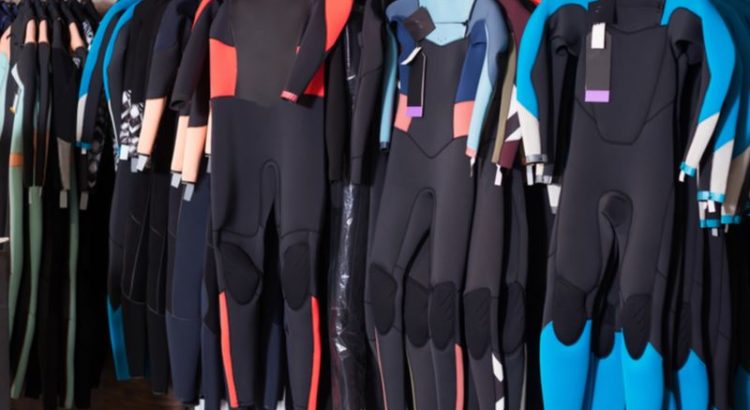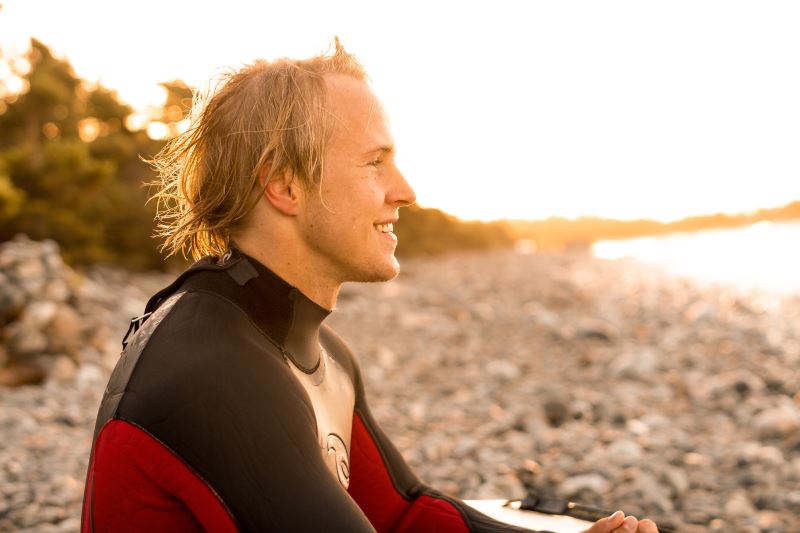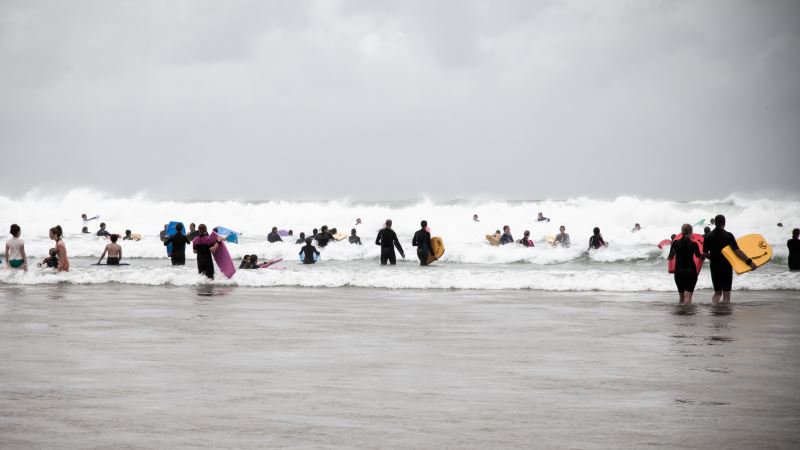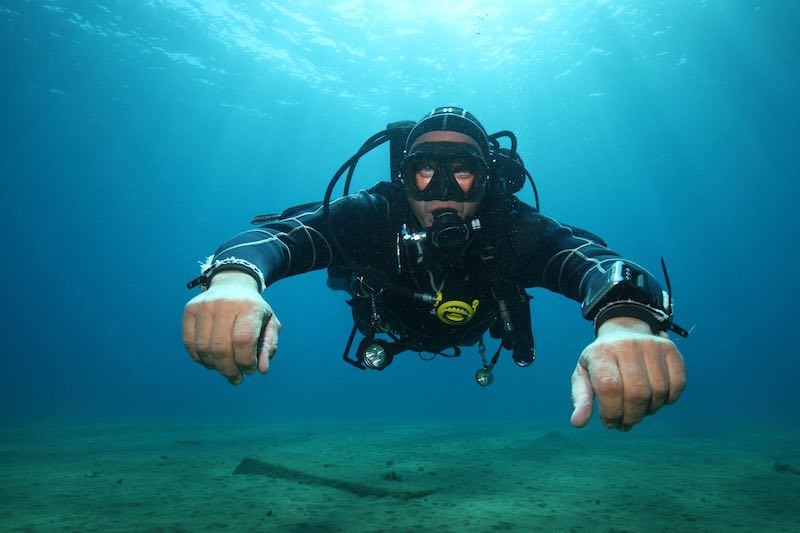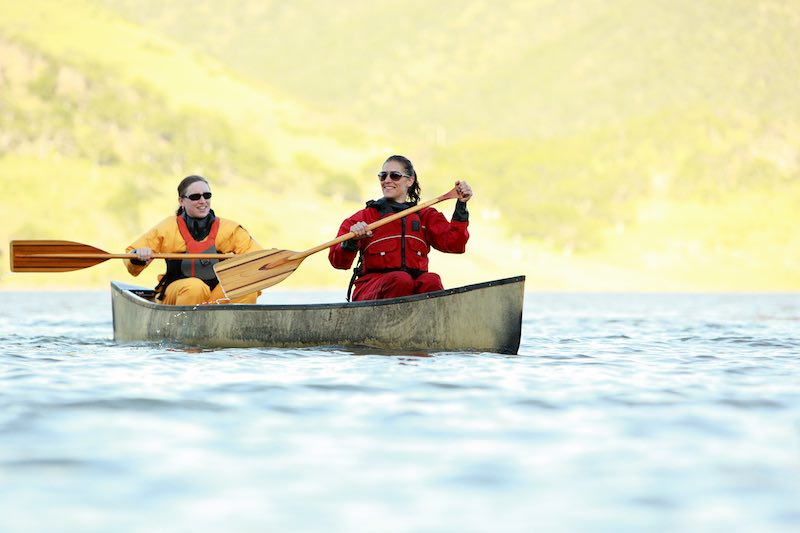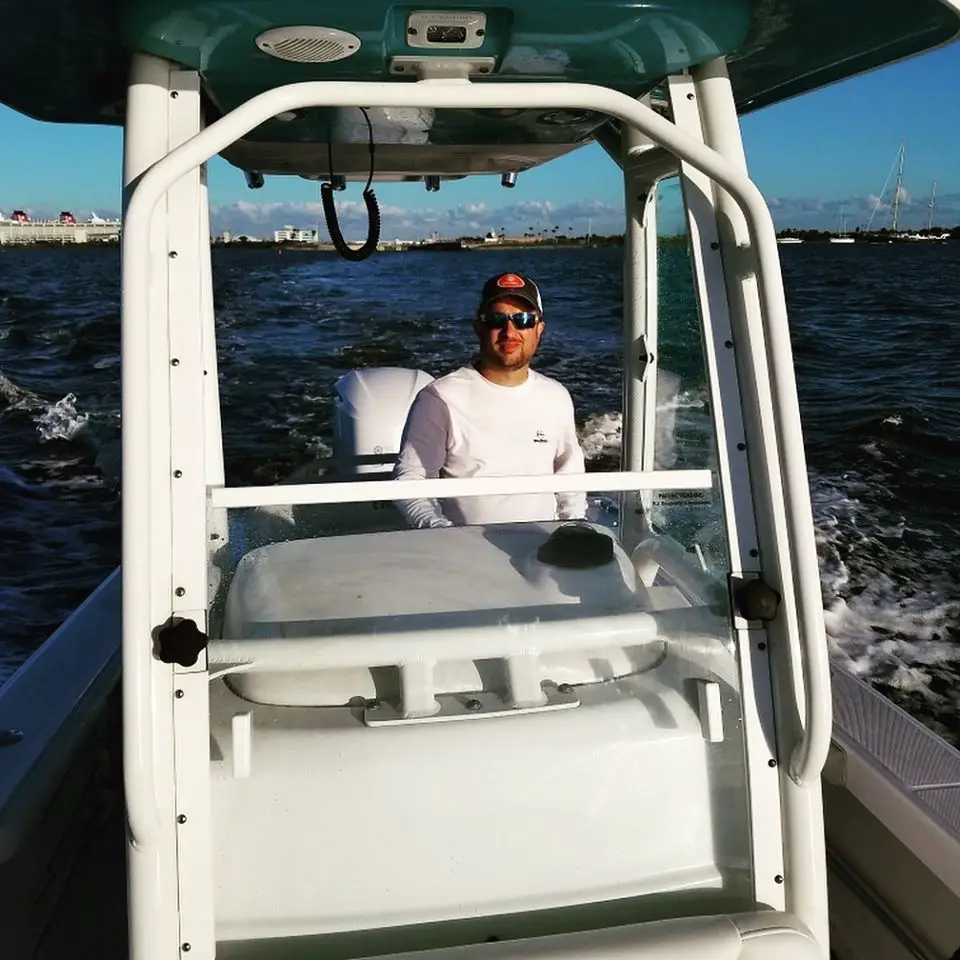This page contains affiliate links. This means that we may get a small commission for recommending products, if you choose to click on something and buy it. This does not cost you anything, but we wanted to be honest and let you know!
(Last Updated On: )Table of Contents
A History of the Wetsuit
The Beginning
Wetsuit vs. drysuit: which, why, how? Read this article as we answer all of your questions, starting from how they appeared to the newest technology.
The history of the wetsuit began during World War II when Italian frogmen began wearing rubber suits for diving. Back in the United States during the same period, military researchers discovered neoprene while researching various rubbers and plastics. This material would prove useful in developing modern-day wetsuit.
Fast forward to 1951, and the University of California, Berkeley, where physicist Hugh Bradner, considered to be the “father of the modern wetsuit,” had decided to spend his “weekend time” trying to improve equipment for the Navy frogmen.
Bradner’s Idea
As if often the case, the modern-day wetsuit is the culmination of ideas from multiple players. Still, Bradner started the ball rolling by coming to an important realization. He understood that, as far as a wetsuit was concerned, a thin layer of water trapped between the skin and the fabric of a wetsuit could be tolerated by the body as long as insulation was also present in the fabric of the suit.
The trapped water would, very quickly, reach the same temperature of the wearer’s skin, and the bubbles trapped in the fabric of the wetsuit would work as thermal insulation to keep it that way.
While most of us might think that it is the water that provides the insulation, it is the gas bubbles in the fabric of the wetsuit that provides the insulation. The suit itself does not need to be wet for this to occur.
Realizing this, Bradner sent his idea to Lauriston “Larry” Marshall of the Navy/National research council Panel on Underwater Swimmers. Another person in this story, Willard Bascom, suggested neoprene as a possible material to Bradner.
Bradner and Bascom were not successful in marketing a version of their suit to the general public, and an attempt at a patent was rejected as it was too similar to a flight suit.
Even the U.S. Navy turned Brandner and Bascom down over concerns that the gas in the neoprene would make naval divers easier to be detected by underwater sonar.
O’Neill’s Game Changer
Enter another player in the game, Jack O’Neill. He started using a neoprene foam that had a closed-cell design. The neoprene foam had been shown to him by a bodysurfing friend.
After experimenting with this foam, O’Neill found it to be superior to the other types of neoprene.
O’Neill relocated to Santa Cruz, California, and, starting in his garage in 1952, established a successful wetsuit company with the motto “It’s Always Summer on the Inside.” O’Neill, too, has been credited with the invention of the wetsuit.
Last but not least, in the line for credit are twin brothers Bob and Bill Meistrell from Manhattan Beach, California. They also started experimenting with neoprene around 1953.
They borrowed $1800 from their mother and bought a local sports shop called Dive N’ Surf.
The Meistrells both designed and tailored their brand of wetsuits, and the company Body Glove was born. The company continues to make products for outdoor enthusiasts to this day, with third-generation Meistrells involved in the business.
Wetsuit vs.Drysuit: Importance of Proper Swimwear
Both wet and drysuits can be referred to as exposure suits, and the name also indicates their function. An exposure suit helps your body to maintain heat or to slow down heat loss.
The importance of the warmth that an exposure suit helps preserve is evident in how the body itself works. Your body is constantly warming the fluids that are in your system, as the warmth enables your body to function correctly.
Wetsuits:
Talking about wetsuit vs. drysuit, it is essential to understand that when your body is submerged in water, especially cold water, your temperature decreases quickly, and you risk losing too much body heat. It is merely a matter of time for body cooling to happen.
Both your mind and your body motor functions lose their proper functioning ability when your body begins to cool. When your body cools, especially when it is rapid, your blood supply is reduced.
This will decrease motor function, affect manual dexterity, and muscles will lose strength. If you are performing critical tasks underwater, this will be a significant concern. This loss of heat can lead to hypothermia, and in some cases, death can be a result.
Drysuits:
As with a wet suit, the important role a dry suit plays is to afford the wearer protection by providing thermal insulation. The difference between the two is that a drysuit excludes water and seals a layer of air between the person and the elements.
The thermal protection is passive in that a dry suit will insulate against heat transfer to the environment. The suit itself does not provide insulation; it is the clothing that you wear under the drysuit that keeps your body warm.
The same reasons that are important for the use of a wetsuit apply to the wearing of a drysuit. Both of these suits are forms of exposure protection for your body and help to enhance your outdoor experience while helping to keep you safe.
Wetsuits vs. Drysuits: Main Differences and Similarities
The function of both wetsuits and drysuits are the same. They are designed to keep you comfortable and warm. The way that each of these suits does that is where the difference lies.
Both wet and drysuits are used by surfers, divers, boaters, and on many other water activities such as jet skis, paddleboards, and windsurfers.
What is Wetsuit?
Usually made from neoprene, a wetsuit is a garment that is worn to provide thermal insulation when a person is engaged in water sports or activities.
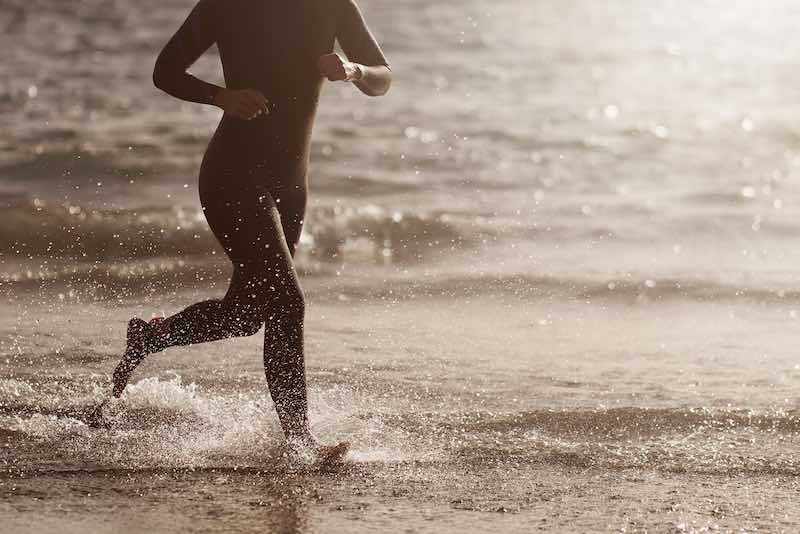
The suit will also provide buoyancy in the water and protects from abrasion, gives protection from the sun and from the stings of marine creatures.
A wetsuit provides its insulation properties through the gas bubbles that are trapped in the material that the suit is made out of. The bubbles reduce the fabrics ability to conduct heat.
What is Drysuit?
The design opposite of a wetsuit, the drysuit, does not let any water inside. It shields the body from the water, but for warmth, you must wear insulating clothes underneath.

The drysuit seals a layer of air between you and the water. Air conducts heat away from your body slower than water, and so a diver in a drysuit will not lose body heat as quickly as a diver in a wetsuit.
Wetsuit vs. Drysuit: More Differences and Similarities
We have already spoken about how both suits are similar. They provide protection.
We have also considered how each suit accomplishes this.
So, in what ways are the two suits different in addition to what we already know? Here are a few of the ways:
- A wetsuit is made out of closed-cell foam neoprene
- A drysuit is made out of either neoprene, rubber or nylon
- A wetsuit is a skin-tight fit
- A drysuit is a loose fit
- A wetsuit is used in cold waters
- A drysuit is used in extremely cold waters
One of the significant differences between the two suits will make a big difference when you are diving, and it is one that a person wearing a wetsuit does not need to take into consideration.
A diver wearing a drysuit will need to adjust the volume of air that is inside of the drysuit during their dive. The air in a drysuit is compressible, so as a diver descends, the air in the suit will compress.
A diver could experience an uncomfortable feeling like being shrink-wrapped if the compression is not offset. The drysuit will have a valve, usually, on the chest area of the suit, that, when depressed, will add air to the suit.
When the diver ascends, the diver needs to release the air as it expands, or they could experience an uncontrolled ascent. The valve for deflation is usually located on the left shoulder of the suit.

A wetsuit fits very snugly on the body, which makes it easier to move both quickly and comfortably when underwater. Drysuits are much baggier and can create drag when moving in water, so the person wearing the drysuit will not be able to move as fast.
You might be able to get into your wetsuit by yourself, but getting geared up in a drysuit will require the help of a buddy. They can be difficult as there are waterproof zippers that need to be done up, and you will need some instructions on how to use the suit.
Drysuits are, as a rule, more expensive than wetsuits because of their construction. However, with proper care, a drysuit can last longer than a wetsuit, as the wetsuit material tends to deteriorate after a few years.
Which Suit Should You Use?
Choosing which suit to use depends on how sensitive you are too cold, how long you will be in the water, and what you will be doing. It will also depend on your budget.
As always, prices will vary depending on quality, but a wet suit will cost about $200 – $250. A drysuit will be $1000 or more.
Temperature Wise
Temperature is a good guide to use when deciding. If you are diving in water whose temperature is colder than 50 degrees, you should choose a dry suit.
Some feel that the decision of which suit to use is based more on comfort. A wetsuit will feel more like it is a part of your body and will streamline in the water better.
You really need to know what makes you comfortable and how you will be using the suit. Think, too, of where will you be diving, how often, and in what temperature of the water.
Sport Wise
A wetsuit is favorable for surfing, wake surfing, river surfing, and other in-the-water activities when it is cold.
If the weather is extremely cold, the drysuit is preferable for kayaking, paddleboarding, and whitewater paddling. In the extreme cold, you can add extra layers under the drysuit.
If you are serious about wanting an exposure suit, it will do you well to visit your local dive center. Some of the centers will have demonstration days at a local beach or pool.
You would be able to try out the different types of suits that are available and make a more informed decision.
Neither suit is one-size-fits-all. Check out this instructional video on how to these suits:
What to Look for in a Good Suit

If you have decided that you want to purchase a suit, we have a few things you should look for.
For a Wetsuit:
Material
Depending on where and when you will be diving, or if you will be swimming or paddling, the thickness of the suit needs to be taken into consideration. The thicker the neoprene, the warmer the wetsuit will be.
Looking at a wetsuit, you will see a number associated with it. A single number, such as 2mm, means that the suit has just one thickness of the neoprene.
If there are two numbers, such as 4/3, then you know that the suit has two thicknesses of neoprene. The thicker material (the higher number) will be around the core of the suit for warmth and buoyancy. The thinner neoprene will be in the arm and leg area for better mobility.
Below is a chart that can help you decide what thickness you should look for in a wetsuit, depending on the weather you will be using it in.
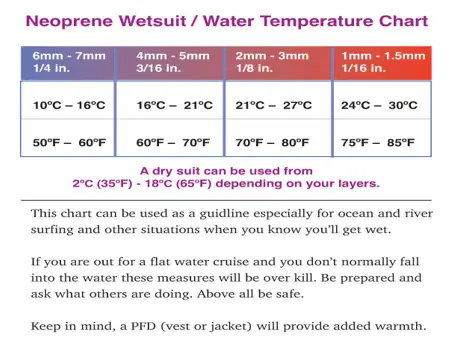
Chart and more info available at standuppaddleboardingguide.com
Zippers
Another consideration for the wetsuit is the zippers on the suit. The placement of the zippers will impact how warm the suit is and how easy it is to put on and take off.
A full front zipper makes a wetsuit very easy to get in and out of, but they are also prone to flushing. Flushing is when cold water from the outside gets into the suit and replaces the already warmed water inside the suit.
Front zippers can be uncomfortable for a surfer, as they spend a lot of time laying on the board and paddling.
Although not as easy as a front zipper, a back zipper is more resistant to flushing. The zipper will run from the base of the spine up to the collar of the suit. There is a strap attached to the zipper so that you can pull it up yourself.
Seams
The seams in a suit can affect the way a suit feels and performs. There are three basic seams, flatlock, glued and blind stitched, and fluid seam welds.
The flatlock seams are found in less expensive wetsuits. They are not entirely waterproof, but they work well for wetsuits that are designed for warmer water.
You will be able to recognize them by the distinctive criss-cross stitching pattern that is able to be seen on both the inside and the outside.
Cold Weather Recommendations
In suits more suitable for cold water, glued and blind stitched seams are used. The panels of the suit are glued edge to edge and then blind stitched. With a blind stitched loop, the stitches don’t pass through the neoprene to the outer face.
The interior stitching will be backed with tape. Because the stitching does not go through the suit to create holes, the waterproofing of the suit is retained, and the warmth of the suit is improved.
High-end wetsuits will have fluid seam welds. These seams are airtight with a low profile.
For a Drysuit:
Material
Made of bi-laminate or tri-laminate materials, a drysuit will not stretch much. When looking for a suit, check to see if it has features such as telescoping torsos and expandable gussets, which help with range of motion.
These fabric drysuits are often referred to as a “shell” suits. Their job is not to keep you warm; it is to keep the water out.
Depending on how much diving you will be doing, and where you will be diving, you can choose from a range of materials. There will be some materials that will have greater abrasion strength if you are exploring underwater rocks or caves.
Zipper
Zipping yourself into a drysuit is when you will need a buddy. The standard suit is a rear entry, and the zipper runs horizontally across the shoulders. While the suit is easy to take on and off, you will need help zipping up.
A self-donning drysuit has a front-entry design, and the zipper runs in a diagonal across the chest and hips, or horizontally across the chest and waist.
A dry suit will come with very snug fitting ankle gaskets. There are other gaskets on a drysuit, but the ankle ones are the hardest to get on and off.
While it requires a significant amount of stretching to get them on, you also have to do this stretching while bent over.
Dry Socks
You might want to consider dry socks as an option to replace ankle gaskets. These dry socks are loose-fitting and keep water out of the suit while keeping your feet dry.
This option makes the drysuit easier to use. They can be made out of latex rubber or Gore-Tex.
How to Put on a Wetsuit:

Take a look at the video below. It has some helpful tips and demonstrates with a live model, which makes it much easier to understand the process.
How to Swim in a Wetsuit:
- You will want to use a longer stroke than you would if you were in a swimming pool. Reach further forward at the front of each stroke. You can use a very slight body roll to help get this extension of your hands.
- You will want to look down and forwards, at about 45 degrees. Use a four-beat leg kick (four kicks for every arm cycle). If you do this, it will maintain the rhythm and timing of the stroke.
- You will want a wider arm recovery. Do not stop at the back of the stroke, but maintain a continuous movement. Continue from the propulsive phase into the recovery phase, which will add to the momentum.
New Technology
We have come a long way since the first suits constructed back in 1952. Manufacturers are always looking for ways to improve these exposure suits even more.
Here are some of the latest improvements for exposure suits:
Wetsuits:
- Materials: Manufacturers are experimenting with materials made out of sustainable tree rubber. Trees in the highlands of Guatemala are being tapped for their organic rubber.
- Zipperless Neck: Zippers are made from hard plastic or metal and, as such, do not bend. Zipperless suits provide greater flexibility and less flushing. However, there is still a ways to go before a zipperless suit is perfected.
- Seams: Improvement in both less and better seams. Companies such as Body Glove and Billabong are always working to improve the seams on suits. Seams are being double-glued and heat taped inside and out, without any stitches.
- Quick Dry: There has been an effort to come up with technology that helps the suits to dry faster. Most people have just one suit, and so fast drying is essential. Some suits are lined, front and back with fast-drying, lightweight naturally hydrophobic quick-dry lining.
- Interiors: Suits are being designed using scientific methods that retain heat without increasing thickness. Thermodynamics in linings is used to recycle body heat into infrared energy, which heats your body even more.
Drysuits:
- Seams: Just as with a wetsuit, seams are an important consideration on a dry suit, and the technology is used for both wet and dry. With seams, instead of being stitched, are doubled glued with the edges side by side, and polyurethane heat tape is applied both inside and out.
- ATR: Improvements in flexibility in dry suits, especially when the diver is bending, kneeling, or reaching upward, are assisted by automatic torso recoil (ATR). Placed in the center of the suit, a tucked fold enables the top of the suit and the bottom of the suit to move independently.
Accessories for Exposure Suits:
There is no wetsuit vs. drysuit when talking about accessories. Both kinds of exposure suits are not standing alone, but need certain accessories.
- Hoods: These make a huge difference, whether you are in cold temperatures or cold water.
- Gloves and Booties: Your hands and feet can go quickly numb. Gloves and booties will keep you warm and enable you to stay in the water longer.
- Rashguards: Use these under a wetsuit, or by themselves as paddle wear. They will protect you from chafing, adding a bit of warmth at the same time.
Different Types of Wetsuits:
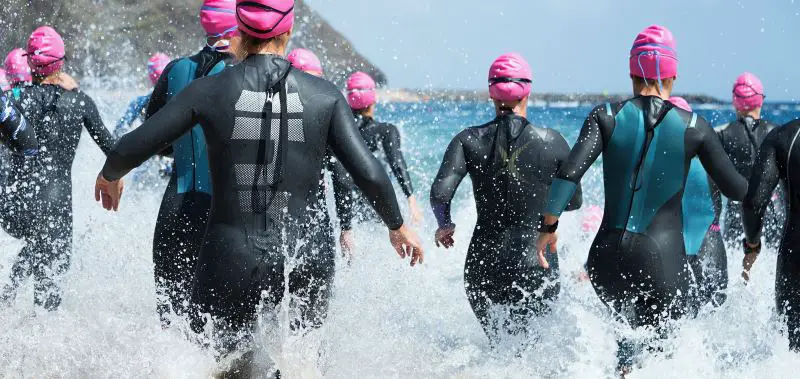
- Freediving: These suits come in two pieces, including a hood and are designed for freediving, the sport in which you dive underwater without the use of any breathing apparatus.
- Jet Ski: Extra padding and grips around the knees; these suits also provide more flexibility in the back and arm areas.
- Paddleboard: Designed to keep out the cold without adding bulk, they are a poly fleece and neoprene blend with a lot of stretches. They protect the wearer’s skin from sun exposure too.
- Kiteboarding/Windsurfing: These types of suits are recommended to keep you insulated from both wind and sun.
- Stealth: Made in a camouflage pattern, and designed for protection in some of the coldest oceans, this suit helps you to blend into the surrounding of barrier reefs and kelp forests.
In Conclusion – Wetsuits vs. Drysuits
Once you have decided which suit might be best for you, make sure you don’t forget the final step. Get out there and experience the world that diving, paddleboarding, surfing, or just living life in the water will provide. It is a big and beautiful world that will awe and inspire you.
Tips for Wetsuit Care:
- Hot water ruins neoprene
- Sun & UV rays will age neoprene
- Don’t keep your suit in a hot trunk
- Dry your wetsuit inside out
- Store it on a wire hanger
- Clean it and dry it quickly. Don’t leave it wadded up
- Surf wax will stick to a wetsuit; there is no getting around it.
- When taking a wetsuit off, make sure to stand on grass, a rock, or pavement. If you stand on the sand or mud, it will get in your suit and make it harder to get on and off.
- No, you do not put your suit in a washer or dryer
- NO, don’t bleach your wetsuit
- Please, don’t iron your wetsuit
- There are special soaps to wash your suit in, as the suit can be a breeding ground for bacteria.
